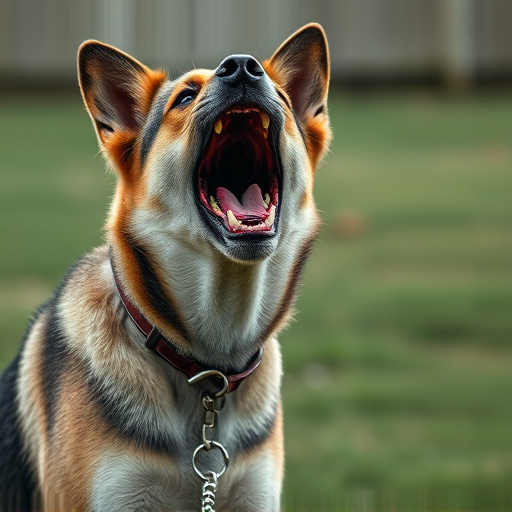Mace Dog Repellent Spray (also known as dog spray) is a controversial yet widely available self-defense tool for aggressive canine attacks. Its coverage area ranges from 3-5 meters, making understanding local laws crucial to avoid legal issues. Law enforcement uses it as a last resort, aiming to temporarily disable aggressors while minimizing bystander impact. Manufacturers have substantial obligations, ensuring clear labeling and rigorous testing due to the spray's critical role in personal safety during protests, wildlife encounters, and dog aggression situations.
In an era of heightened security, mace dog repellent spray has emerged as a controversial yet potent tool for personal protection. This comprehensive guide delves into the legal understanding surrounding this powerful defense mechanism, exploring key aspects like justified usage and manufacturer responsibilities. We analyze real-world case studies to dissect product liability and offer strategic insights on effective legal defenses. Discover how this spray’s coverage area and effectiveness play a pivotal role in shaping legal outcomes.
- Mace Dog Spray: Legal Understanding
- Defense Strategies: When Use is Justified
- Product Liability: Manufacturer Responsibilities
- Case Studies: Real-World Applications
Mace Dog Spray: Legal Understanding
Mace Dog Repellent Spray, also known as dog spray or pepper spray for dogs, is a controversial yet widely available self-defense tool designed to deter aggressive canine attacks. The legal understanding surrounding this product varies across jurisdictions, but its use typically falls under the category of personal protection and property defense.
In many regions, mace dog repellent spray is legal when used as a last resort to protect oneself or one’s property from an imminent threat posed by an unprovoked dog attack. The coverage area and effectiveness of such sprays differ; some manufacturers claim they can incapacitate dogs within a 3-5 meter radius, while others suggest a smaller range. Understanding local laws regarding dog spray usage is crucial, as excessive or inappropriate deployment could lead to legal repercussions.
Defense Strategies: When Use is Justified
When it comes to defending against charges related to the use of mace dog repellent spray, understanding when its application is justified is crucial. Law enforcement and security personnel are trained to employ non-lethal force tools like mace only as a last resort when other de-escalation methods have failed or when there’s an imminent threat to public safety. The coverage area of the spray—typically around 2-3 meters—is another critical factor.
Strategic deployment is key: officers should aim to disable an aggressor temporarily while ensuring minimal impact on bystanders. Proper use cases include situations where a dog becomes aggressive and poses a danger to others, or when individuals resist arrest, providing time for backup to arrive. Knowing the legal boundaries and demonstrating a rational, proportionate response can significantly strengthen any defense strategy in such instances.
Product Liability: Manufacturer Responsibilities
In the realm of product liability, manufacturers of Mace Dog Repellent Spray bear significant responsibilities toward consumers and potential users. The spray’s effective coverage area is a crucial factor in its legal defense; it dictates the extent to which manufacturers can claim their product prevents dog attacks or deterrs aggressive behavior. As such, detailed labeling and clear instructions regarding proper usage and recommended application areas are essential.
Manufacturers must ensure that consumers fully understand the spray’s limitations and potential risks, especially when dealing with specific breeds known for heightened sensitivity. In cases of adverse reactions, inadequate coverage leading to repeated dog encounters, or failure to prevent attacks, product liability lawsuits may arise. As such, manufacturers should invest in rigorous testing and quality control measures to safeguard against any product defects that could contribute to legal disputes.
Case Studies: Real-World Applications
In real-world applications, mace dog repellent spray has proven itself effective in various scenarios, showcasing its crucial role in personal safety. Case studies reveal that this non-lethal option is increasingly employed by law enforcement agencies and individuals alike for crowd control and animal deterrence. For instance, during high-risk situations like protests or wildlife encounters, the spray’s powerful scent can create a safe distance between individuals, reducing potential risks.
The mace dog repellent spray’s coverage area is another significant aspect that makes it a preferred choice. With a range of up to 3 meters (10 feet), it allows users to protect themselves from aggressive dogs without causing harm to bystanders or the animal itself. This strategic application demonstrates how mace dog repellent spray serves as a game-changer in navigating challenging environments, ensuring public safety while maintaining a humane approach.
The legal landscape surrounding Mace dog repellent spray usage requires a nuanced understanding of self-defense rights, animal control regulations, and product liability. In justifying its application, individuals must navigate a complex web of legal precedents and public safety considerations. Awareness of spray coverage areas and responsible use are paramount to ensuring compliance with the law. Through examining real-world case studies and manufacturer responsibilities, this knowledge can empower users while fostering safer communities. Remember, proper legal defense strategies can mitigate risks associated with Mace dog spray use, striking a balance between personal protection and public well-being.
